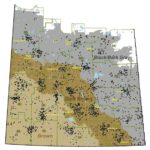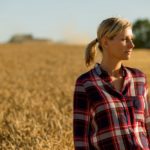
‘Farmscaping’ for profitability, sustainability
Applying some of the same principles from kitchen design can improve the environment and the workflow on the farm

The carbon tax
Farmers see themselves as the good guys in the carbon debate, with good reason. Is agriculture going to pay anyway?

Are you ready to scout for and control flea beetles?
Flea beetles move fast and do a lot of damage. Be sure to keep ahead of them in your canola crops

Going beyond NPK in your fertilizer program
New tests get closer to helping producers build soil health

Is climate change making leaf diseases worse?
Durum quality took a beating last year, and climate change could see more of the same

Your next employee
The solution to your labour shortage may be just waiting for you to give her a chance

Still sifting through genes, but…
Plant breeding has always been about testing to see how one gene interacts with another, but today it can be done much more quickly

Is strip tillage a residue solution?
We don’t want to see a step backward in reduced-tillage practices. So how can canola growers improve seed survival and crop uniformity in challenging residue situations?

A genetic solution to fusarium?
Across the country, several researchers are studying fusarium from every angle, from pathology to agronomy

Row upon row of fusarium
At this ‘nursery’ at Carman, Man., researchers simulate exactly the conditions wheat farmers fear — warm, humid and loaded with fusarium spores


